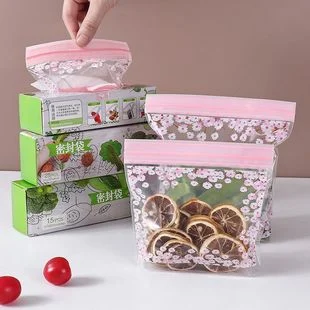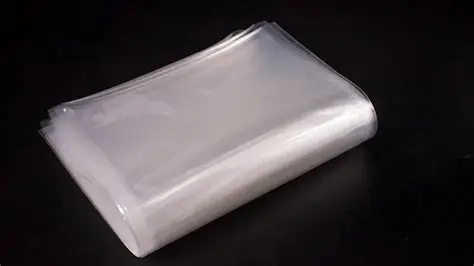Factors affecting frozen food quality primarily include four aspects
First, the freshness and quality of raw materials used in processing;
Second, whether contamination occurs during processing;
Third, packaging quality—specifically, whether bag ruptures cause contamination;
Fourth, whether the entire cold chain is maintained.
For packaging bag manufacturer Wanle, our focus is on controlling packaging quality.

High-quality frozen food packaging bags must possess five essential characteristics:
High barrier properties to prevent oxygen exposure and moisture evaporation;
Impact resistance and puncture resistance;
Low-temperature tolerance, ensuring packaging materials remain non-deforming and non-brittle even at -45°C;
Oil resistance;
Hygienic properties to prevent migration of toxic or harmful substances into food.
Frozen food packaging must meet the demands of large-scale distribution, preserving product quality from production through transportation and sales while preventing bacterial or harmful contamination.
What should be considered when producing frozen food packaging bags? 7 key aspects require attention for frozen food packaging bags
- Packaging standards and regulations;
- Characteristics of frozen foods and their protective requirements;
- Performance and applicability of packaging materials;
- Food market positioning and distribution area conditions;
- Impact of overall packaging structure and materials on frozen foods;
- Rational packaging structure design and decorative design;
- Packaging testing.

During production control, potential hazards from packaging materials may arise from material selection—specifically, the packaging materials, auxiliary materials, and additives used. If the selected packaging materials themselves pose safety risks, they may migrate into the food during use. The same applies to additives. Therefore, packaging manufacturers must exercise strict vigilance in material selection when producing food packaging bags.
Currently, plastic flexible packaging used in the frozen food sector primarily falls into 2 categories:
Category I: Composite packaging, which bonds two plastic films together using adhesives. These adhesives often contain harmful substances like esters and phthalates, which can easily permeate into food, causing contamination.
Category II: Internationally advanced multi-layer co-extruded high-barrier packaging. Produced using eco-friendly materials, these films come in five-, seven-, or nine-layer configurations. Instead of adhesives, three or more extruders melt and co-extrude functional resins like PA, PE, PP, PET, and EVOH. This process delivers pollution-free production with high barrier properties, superior strength, and flexible structural design.

For instance, seven-layer co-extruded high-barrier packaging incorporates multiple nylon layers, significantly enhancing tensile and tear strength. It withstands temperatures from -45°C to 120°C, achieves 100% vacuum sealing, resists breakage and freeze cracking, and offers excellent durability under extreme temperatures, storage, and transportation. This packaging effectively prevents food oxidation, moisture loss, and microbial growth, thereby extending the shelf life of frozen products.
Moreover, this multi-layer co-extruded high-barrier packaging not only maintains food quality in low-temperature environments but also exhibits exceptional heat resistance. It preserves packaging integrity during heating and thawing processes, preventing damage or food spoilage. Its high barrier properties effectively block oxygen and water vapor permeation, significantly reducing oxidation and dehydration issues while preserving the freshness and nutritional value of frozen foods.
The environmental sustainability of this packaging material is another major advantage. By eliminating traditional adhesives, it reduces the risk of harmful chemical migration, meeting modern consumers' stringent food safety standards. Furthermore, it supports recycling, minimizing the environmental impact of packaging waste, and aligning with current green packaging trends.
Looking ahead, as technology advances, frozen food packaging designs will become increasingly intelligent, with greater diversity and functionality in materials. For instance, integrating sensors or smart labels enables real-time monitoring of food temperature and condition, ensuring optimal quality throughout transportation and retail. Such innovations not only enhance consumer experience but also drive progress in cold chain logistics, guaranteeing high-quality standards from production to consumption.
Wanle Package specializes in producing high-quality frozen food packaging bags. Contact us now to enjoy excellent service and customized solutions!
